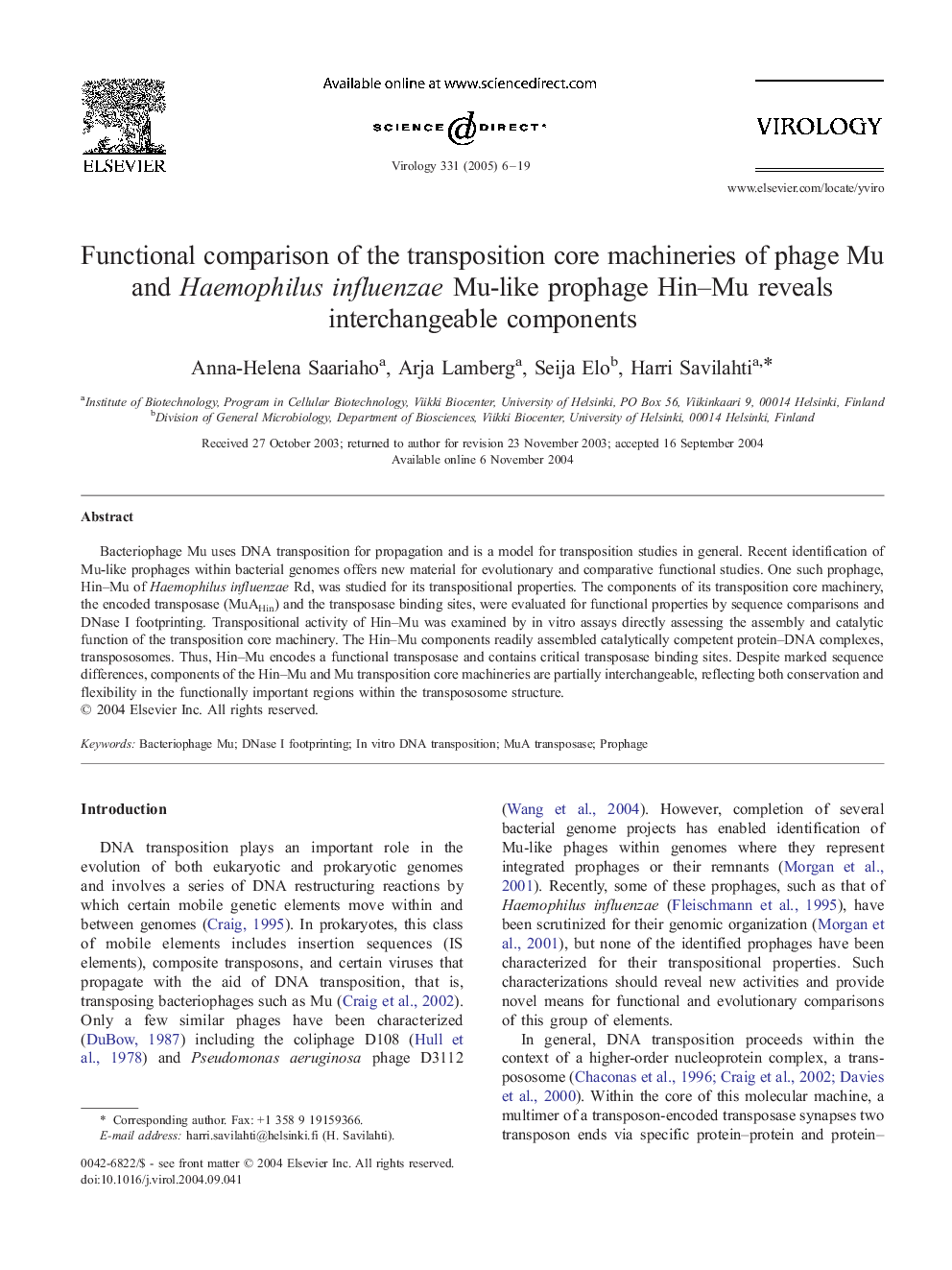| Article ID | Journal | Published Year | Pages | File Type |
|---|---|---|---|---|
| 9287634 | Virology | 2005 | 14 Pages |
Abstract
Bacteriophage Mu uses DNA transposition for propagation and is a model for transposition studies in general. Recent identification of Mu-like prophages within bacterial genomes offers new material for evolutionary and comparative functional studies. One such prophage, Hin-Mu of Haemophilus influenzae Rd, was studied for its transpositional properties. The components of its transposition core machinery, the encoded transposase (MuAHin) and the transposase binding sites, were evaluated for functional properties by sequence comparisons and DNase I footprinting. Transpositional activity of Hin-Mu was examined by in vitro assays directly assessing the assembly and catalytic function of the transposition core machinery. The Hin-Mu components readily assembled catalytically competent protein-DNA complexes, transpososomes. Thus, Hin-Mu encodes a functional transposase and contains critical transposase binding sites. Despite marked sequence differences, components of the Hin-Mu and Mu transposition core machineries are partially interchangeable, reflecting both conservation and flexibility in the functionally important regions within the transpososome structure.
Related Topics
Life Sciences
Immunology and Microbiology
Virology
Authors
Anna-Helena Saariaho, Arja Lamberg, Seija Elo, Harri Savilahti,
